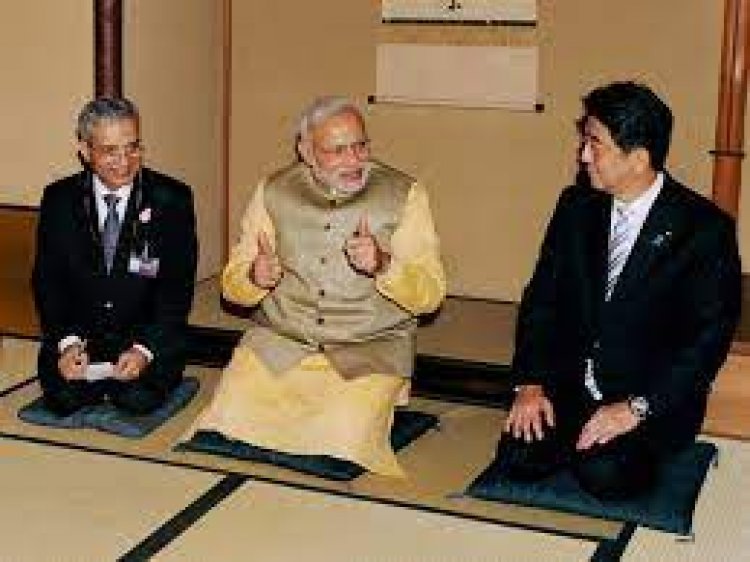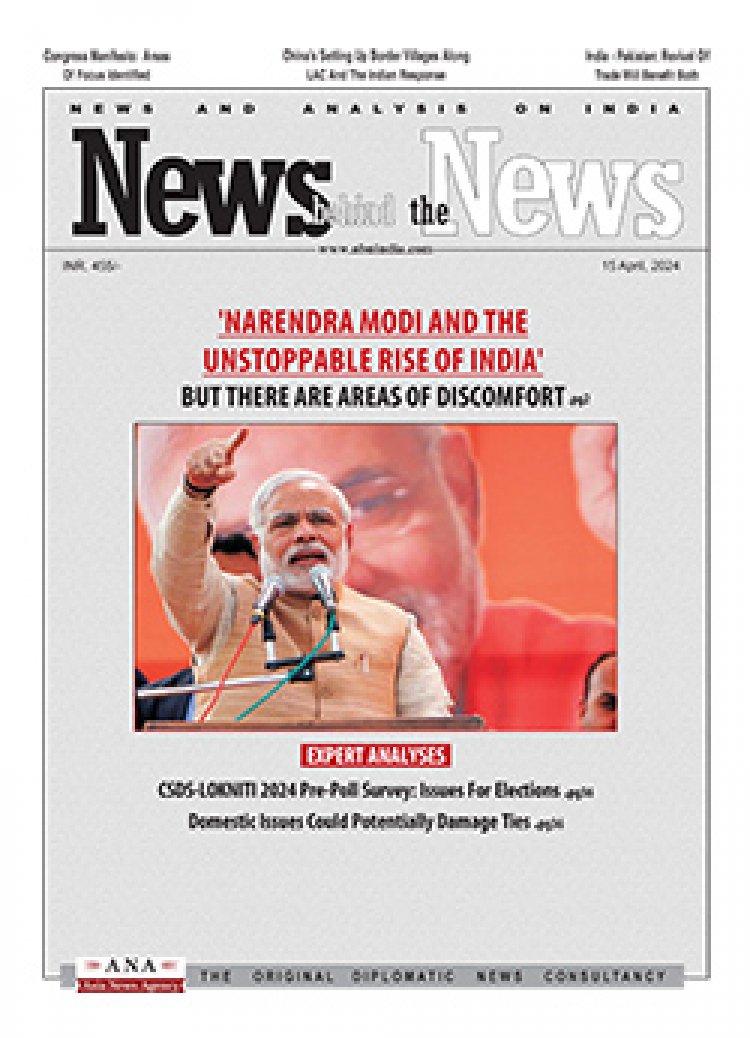PM Modi's visit to Japan, Papua New Guinea, Australia
STORIES, ANALYSES, EXPERT VIEWS

Prime Minister Narendra Modi embarked Friday on a six-day visit to three countries – Japan, Papua New Guinea and Australia, to attend multilateral summits, including that of the Group of Seven (G7).
G7 Summit
The prime minister first visited Hiroshima in Japan from May 19 to 21 to participate in the annual summit of the G7 advanced economies under the Japanese Presidency.
Prior to his departure, PM Modi said his presence at the G7 Summit is particularly meaningful as India currently holds the G20 presidency.
In the departure statement ahead of his six-day three-nation tour, Modi said he is looking forward to exchanging views with the G7 countries and other invited partners on the challenges that the world faces and the need to collectively address those.
Quad meeting: All four Quad leaders will meet on the sidelines of the G-7.
Strengthening India, Japan relations
PM Modi is visiting Japan at the invitation of Japanese Prime Minister Fumio Kishida.
In recent years, the economic relationship between Japan and India has steadily expanded and deepened. The volume of trade between the two countries has increased.
Japanese PM Fumio Kishida visited India this March. He arrived in India on March 20 and during his meeting with PM Modi, the two leaders confirmed that India and Japan share the responsibility to maintain and strengthen the international order based on the rule of law. They concurred on the importance of clearly outlining this idea at the G7 and G20 meetings.
The two leaders during a working lunch in Delhi confirmed that the two countries will coordinate closely bilaterally as well as in G4 to achieve concrete results on the Security Council reform, according to an official release.
Visit to Papua New Guinea
From Japan, the Prime Minister will travel to Port Moresby in, Papua New Guinea, where he will host the third Summit of the Forum for India-Pacific Islands Cooperation (FIPIC III Summit) jointly with Prime Minister of Papua New Guinea James Marape on May 22.
PM Modi, prior to his departure said ‘I am grateful that all 14 Pacific Island Countries (PIC) have accepted the invitation to attend this important summit. FIPIC had been launched during my visit to Fiji in 2014, and I look forward to engaging with the PIC leaders on issues that bring us together, such as climate change and sustainable development, capacity building and training, health and well-being, infrastructure and economic development.’
Launched in 2014, the FIPIC involves India and 14 Pacific Island Countries (PICs) – Fiji, Papua New Guinea, Tonga, Tuvalu, Kiribati, Samoa, Vanuatu, Niue, Federated States of Micronesia, Republic of the Marshall Islands, Cook Islands, Palau, Nauru and the Solomon Islands.
A Ministry of External Affairs release said that Prime Minister Modi will have bilateral engagements in Papua New Guinea, including meetings with Governor-General Sir Bob Dadae and Prime Minister James Marape.
PM Modi will be the first visit by an Indian prime minister to Papua New Guinea.
Visit to Australia
After concluding his visit to Papua New Guinea, PM Modi will travel to Sydney despite the cancellation of the Quad Leaders’ meeting. He will arrive in Australia on May 23. Australian PM Albanese said the leaders of Australia, the US, India and Japan -the Quad grouping- would now likely meet on the sidelines of the G7 in Japan this weekend.
PM Modi will have a bilateral meeting with his Australian counterpart Albanese on May 24. He will also interact with Australian CEOs and business leaders, and address the Indian diaspora at a community event in Sydney on May 23.
Australian PM Albanese during his recent visit to India in March, earlier this year, said that India and Australia have forged a deeper connection in education, culture, defence and trade. The Australian PM was on an official visit to India from March 8-11. The Australian PM also shared a video showing highlights of his India visit. During the visit, the Australian PM met Prime Minister Narendra Modi at the Hyderabad House in New Delhi to hold bilateral talks.
US visit: Following this foray with the Indo-Pacific ‘coalition of democracies’, Modi will be in Washington in June for a state visit — a rare honour accorded by the U.S. President, that has been reserved for only two Indian leaders in the past, President Sarvepalli Radhakrishnan (1963) and Prime Minister Manmohan Singh (2009). This visit will be marked by many strategic forays to bring India-U.S. ties closer.
Other International engagement of PM Modi
Hosting the SCO Meet: Almost immediately after his return from the US, PM Modi will need to pivot to the opposing coalition however, hosting the Shanghai Cooperation Organisation (SCO) Summit scheduled for July 3-4, where he is expected to receive China’s President Xi Jinping, Russia’s President Vladimir Putin, the Pakistan Prime Minister Shehbaz Sharif, leaders of central Asian states, the soon-to-be added SCO members, the President of Iran, Ebrahim Raisi, and the President of Belarus, Alexander Lukashenko, and other guests.
It my be recalled that at the Shanghai Cooperation Organisation Council for Foreign Ministers (SCO-CFM) held in Goa earlier this month, India’s bilateral relations with mainly Pakistan, but China and even Russia, were allowed to overshadow more substantive multilateral outcomes. This is of particular annoyance to Central Asian countries, that have always insisted that no bilateral issues are brought up at the SCO, lest it go the way of the other regional South Asian grouping, the South Asian Association for Regional Cooperation (SAARC).
Visit to France: A week after the SCO summit, Mr. Modi will pivot back to the European Union, as chief guest at France’s national 'Bastille day’ parade; visits to other European capitals are likely.
Visit to South Africa for BRICS summit: August will see yet another turn, with the BRICS summit in South Africa. PM Modi will engage with the leaders of Russia, China, Brazil and South Africa on an alternative BRICS payment mechanism to the dollar-dominated international system, along with other ideas on the agenda seeking to build a counter-narrative to the U.S.-European Union combine.
G-20 summit in Delhi: In September, as Modi hosts every global leader at the G-20 summit in Delhi, his diplomatic skills will be tested again — not since 2010 have leaders of all permanent members of the UN Security Council visited Delhi in the same year, let alone at the same time.
















